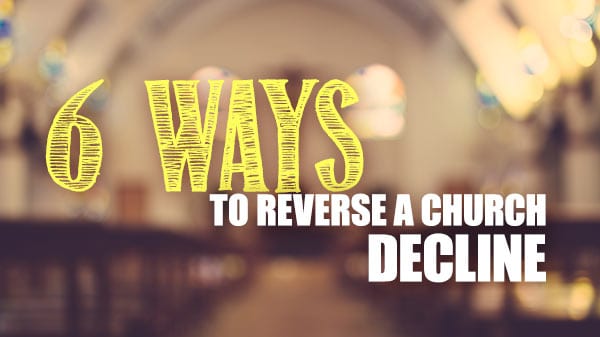I don’t particularly like the “quick-fix” formula some pundits offer to leaders of churches that are plateaued or experiencing a church decline.
The approaches often appear to be man centered and methodological. Indeed, many times I think the solutions offered could just as easily apply to a civic organization as they could a church.
Nevertheless, I have had the wonderful opportunity to research churches across America, as well as to have literally hundreds of conversations with church leaders in a variety of settings.
What I have learned is that many churches have plateaued or declined. Many leaders are frustrated and seeking God’s solution to the situation. And a number of churches exhibit common patterns when they break out of their numerical slump.
6 ways to reverse church decline:
1. To reverse a church decline, churches enter a time of corporate prayer and fasting.
Sometimes the period is a short duration, such as 24 hours. But in that time, many members of the body agree to pray and fast to seek God’s face for His will for His church.
In some churches, the number of members who participate is relatively small compared to the whole membership. In other situations, a large number may participate. In each case, those who do pray and fast understand only God can ultimately give the increase to a congregation.
2. To reverse a church decline, churches start new groups.
Churches that start new small groups, new Sunday school classes, new home groups, new discipleship groups and a plethora of other possible groups, often experience turnaround growth. More often than not, the approach to starting these groups is more strategic than haphazard, and more intentional than incidental.
3. To reverse a church decline, churches start new worship services.
These worship services may be on Sunday morning, but they could be on other days and times as well. They could be new campuses or new venues. Like those that start new groups, many of the breakout churches strategically and intentionally make the starting of new worship services a vital part of the present and future of the congregation.
4. To reverse a church decline, churches emphasize the power of inviting.
The pastor emphasizes it from the pulpit. Printed and web information constantly reminds members to invite others. The leadership of the church seeks to make the act of inviting others part of the DNA of the congregation.
5. To reverse a church decline, churches emphasize the importance of groups growing.
Not only do breakout churches place a high priority on creating new groups, they often emphasize the importance of the groups themselves growing. Leaders attempt to instill a Great Commission mindset, not only for the church as a whole, but also for each group individually.
6. To reverse a church decline, churches truly serve the community.
Many churches break their cycles of decline or plateau by providing means for members to serve the community. This service is far more than inviting persons to come to the church facilities. It involves such activities as painting public school classrooms, resourcing indigent school children, providing free refreshments at community events, and being a force for mobilization to meet needs expressed by community leaders.
These six breakout suggestions are not some quick-fix formula to reverse decline. Inherent in each of them are changes in mindsets and attitudes. Some churches have succeeded by implementing only one of them. Others have successfully done all of them and even more.
Indeed, you can help both the readers and me by sharing other breakout approaches your church has used. Your response may very well make the difference in the life of a church and, thus, the lives of many people.













